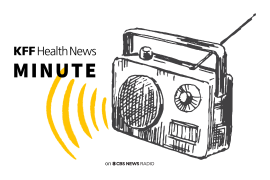New York Times Examines Link Between Prisons, HIV/AIDS Prevalence Among African Americans
The New York Times on Friday examined the link between high incarceration rates and HIV/AIDS prevalence among African Americans, a "complex domestic issue" that has proved to be a "continuing struggle" in the effort to curb the disease in the United States. More than half of all new HIV infections in the United States occur among African Americans, and African-American women comprise 72% of new HIV cases among all women. Of the almost 2.1 million people currently incarcerated nationwide, 40% are African-American. According to the Times, many inmates enter prisons -- where the prevalence of HIV/AIDS is at least three times higher than in the general population -- already HIV-positive. High-risk behaviors, including injection drug use and unprotected sex, often go unaddressed in prisons; condom distribution is banned in most state correctional facilities and drug addiction goes untreated, Robert Fullilove, associate dean of Columbia University Mailman School of Public Health, said, according to the Times. Such behaviors lead to an "expotentia[l]" increase of HIV transmission both inside and outside of prison, he added, the Times reports.
Outside Prison
According to Dr. Peter Leone, medical director of the HIV/Sexually Transmitted Disease Prevention and Care Division of the North Carolina Department of Health and Human Services, one possible reason for the increasing HIV prevalence rates among African Americans is that in most black communities, there is little separation between former inmates and most other individuals in the community. "You're not even looking at six degrees of separation in most black social networks between a disenfranchised former inmate and someone who is in college or highly respected in the community," he said. Incarceration rates also can affect HIV transmission because high imprisonment rates can increase the incidence of risky behaviors by creating unbalanced sex ratios, worsening economic conditions and increasing the "social capital" of men who are not in prison, according to the Times. In addition, recently released inmates often "plunge immediately" into high-risk behaviors, the Times reports. "Many inmates who have been locked up for awhile want two things when they come out," Dr. David Wohl, an infectious disease specialist at the University of North Carolina-Chapel Hill, said, adding, "One of them is a Big Mac. The other is sex. If you're going to get them with condoms or health messages, you have to be quick." According to Thomas Clodfelter, a former inmate living with HIV who counsels other former prisoners, high-risk behaviors are compounded by the difficulties that many former inmates face when re-entering society -- "hurdles that often push" ex-inmates back into "dangerous social and sexual behavior," according to the Times.
Prevention, Treatment Programs
Researchers currently are developing education and prevention programs that target three specific groups: inmates, recently released prisoners and individuals in the social networks through which they move, the Times reports. UNC currently is operating weekday medical clinics in three of the 77 prisons in the state in coordination with the North Carolina Department of Correction. Inmates in the state who are nearing their release date also receive counseling, a month's supply of any medications they are taking and a prescription for a refill and contact information for health service organizations. UNC also is running a new project in which case managers will accompany HIV-positive inmates recently released from prison to their medical and social service appointments for the first six months after release and will track their progress. Even more challenging than developing treatment and education programs is "stripping away" the stigma that often is associated with HIV/AIDS and that "shrouds much discussion of HIV among blacks in the South," according to UNC project members, the Times reports (Clemetson, New York Times, 8/6).






